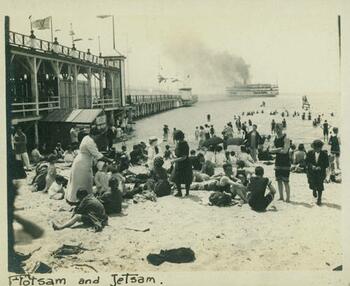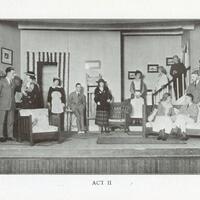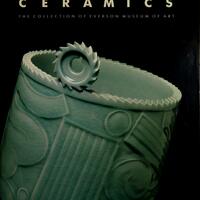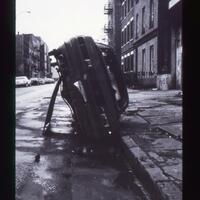History of Amusement Parks
The early pleasure gardens of Europe are considered by historians to be a forerunner of modern amusement parks where the entertainments included theatre shows, firework displays, and dancing and drinking booths. The most noted of these include Vauxhall Gardens (Britain) and Tivoli Gardens (Denmark). The advent of the railway and the arrival of the Industrial Revolution resulted in a renewed popularity of the travelling fairs in the mid-19th century. The traveling fair allowed people from all walks of life to share in the experiences of entertainment. Advances in mass transportation, coupled with the emergence of the private automobile, enabled people to come to the parks rather than the parks coming to the people.
Coney Island in New York was developed as a resort by Paul Boyton, who moved there after the success of the world’s first amusement park, Paul Boyton’s Water Chutes, which opened on Chicago’s South Side in 1894. Inspired by the success of the midway that was part of Chicago’s 1893 Columbian Exposition, this venture used rides as its main attraction, instead of picnic facilities or a lake. The success of Boyton’s Chicago Park encouraged him to open a similar facility at the fledgling Coney Island resort in 1895. By the 1920s, amusement parks could be found across the country in cities large and small. For Buffalonians, crossing Lake Erie for the shores of Ontario was presented as an ideal getaway to the more "healthy and wholesome" lakeshore setting, as well as enjoyment of amusement park rides and attractions.
The Great Depression caused an enormous downturn in attendance at amusement parks and many were forced to close. After WWII, war-weary Americans once again turned to amusement parks for entertainment. Postwar parks included a "Kiddieland" area where families could enjoy rides and games together. New rides were based on war themes (fighter planes and tanks) or futuristic themes (rocket ships and fantasy cars). The bizarre freak shows of the pre-War amusement parks were replaced by the fantasy theme parks of the 1950s, epitomized by the opening of Disney Land in Anaheim, California, in 1955.
Although amusement parks appear to be in decline once again, the resilience of the park owners and operators and their ability to detect the pulse of American ideals will probably create a new direction for this venue of public entertainment.
Early History of Crystal Beach (ca. 1888-1940)
Crystal Beach is located in the township of Fort Erie in the province of Ontario, Canada, along the shores of Lake Erie. Crystal Beach began in 1888 as a Chautauqua show area, or religious campground, with an auditorium, tents, and picnic grounds. It drew 150,000 guests per season. Entrepreneurs saw an opportunity to make money by having side show performances between sermons and to offer refreshments.
A group of investors got together in 1890 and formed The Crystal Beach Company (CBC), as the beach was dubbed by one of the partners because of the sand quality there. The beach was a major attraction because of a gentle slope that ran for some distance underwater with no drop-offs or undertow. Crystal Beach continued to operate until 1989 when the park was closed permanently. It is now the site of a private gated community.
The company installed amusements, built a pier, and started ferry service to the park, which delivered its first customers on July 16th of 1890. The ferry company ran The Dove (500 passenger) and Superior (1200 passenger), for the 1890 season but brought Pearl (800 passenger, later renamed Crystal) in 1891 to meet the growing demand. Other ferries that served the park in its first decade were Gazelle, Puritan (launched 1982), Pilgrim, State of New York, A.J. Timon, Garden City, and Darius Cole. The Puritan unfortunately burned in Buffalo in 1901.
The steamboats that ferried passengers across the lake from Buffalo, NY, to the park were themselves a part of the Crystal Beach experience. In 1910, two more steam ships were added to the fleet, the Canadiana and the Americana, both with dance floors on board, enabling passengers to limber up for dances in the Crystal Dance Hall. The Ontario Southern Railway also provided a short-lived connection between the park and the mainline rail station at Ridgeway. This service consisted of an elevated monorail-style train and ran for only three summers from 1896 through 1898.
A miniature train and a carousel may have been built as early as 1888 or 1889. Sometime around the turn of the century an Armitage-Herschell carousel with rocking horses was installed. Other popular amusements added over the years included roller coasters, fun houses, bumper cars, roller skating rinks, and of course, a midway. To house guests, investors built The Assembly House Hotel, later renamed The Royal, which burned down in 1923. The Crystal Beach Collection features the Bon Air Hotel.
In 1921, a new concrete pier was erected to accommodate increased business. It had a two-story covered section with an open upper observation deck. This upper deck was used to launch fireworks in later years. The pier still exists today.
In 1902 one of the concessionaires was confectioner George Hall. He became famous for his lollipops but later sold candy kisses, caramel corn, peanuts, and popcorn. In 1924 he became president of the Buffalo & Crystal Beach Corporation which purchased the Park in March of that year for approximately $1,000,000. The new owners immediately remodeled the dance pavilion, adding new lighting effects. The incredible 3,500 square-meter maple floor could hold up to 3,000 dancers at once.
The CBC put in Traver Caterpillar and Merry Mix-Up rides, plus an aerial ride. By the 1940s the CBC also came to operate a miniature golf course and other devices in the park. What really put Crystal Beach Amusement Park on the map was the Crystal Beach Cyclone, a wooden roller coaster that opened in 1927. The ride was very intense and according to its fans, was one of the greatest coasters ever made. It closed in 1946 and many of the parts went into the Crystal Beach Comet, another wooden roller coaster that remained until the Park closed. The Comet is now located at The Great Escape and Splashwater Kingdom in Lake George, NY. At its peak in the 1940s and early 1950s the park had about 20,000 visitors daily from Memorial Day through Labor Day.
(Sources: "Crystal Beach Park (1888-1989)", from Coaster Enthusiasts of Canada: Closed Canadian Parks Web site)
Additional Resources
Amusement Park Physics from Annenberg Interactives
Theme Park Related Activities & Lesson Plans
Coaster Enthusiasts of Canada: Closed Canadian Parks
Herschell Carrousel Factory Museum
Crystal Beach Keepsakes



